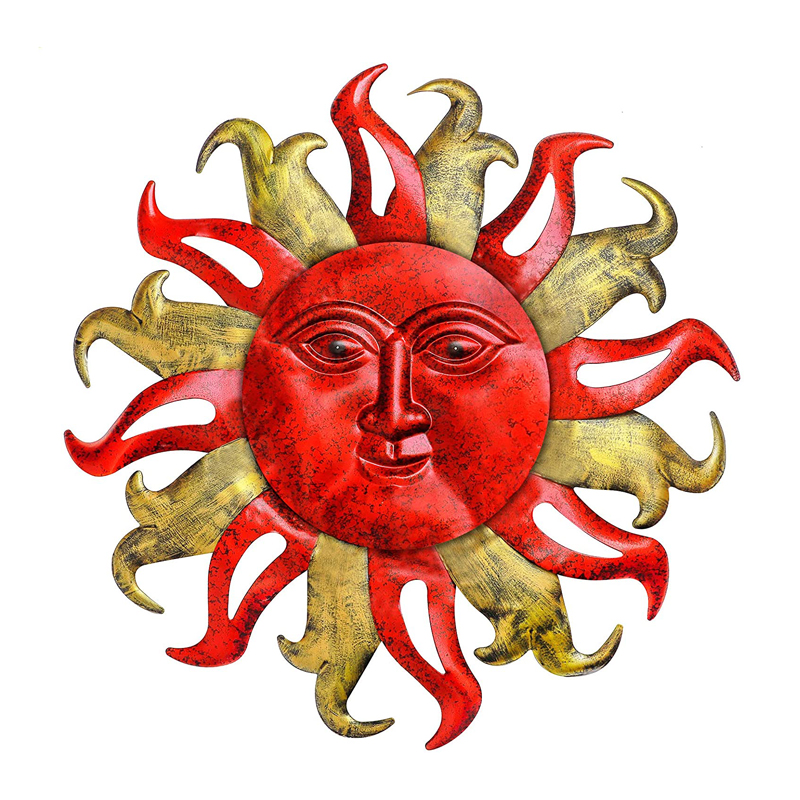Solar Face “Splendor” Wall Plaque Statue
This Solar Face Symbol Statue is an Inspirational Sun Art. Large metal Solar Face Wall Plaque decoration is unique, eye-catching color, bright, and cheerful style. Crafted of durable metal and high-grade paint coating, will not fade or rust under heat, sunlight, humidity, and rain. There is a hook on the back of the Sun wall decor for easy hanging. A Solar Symbol is a symbol representing the Sun. Common solar symbols include circles (with or without rays), crosses, and spirals. In religious iconography, personifications of the Sun or Solar Attributes are indicated by means of a halo or a radiate crown. When the systematic study of comparative mythology first became popular in the 19th century, scholarly opinion tended to over-interpret historical myths and iconography in terms of “solar symbolism“. This was especially the case with Max Müller and his followers beginning in the 1860s in the context of Indo-European studies. Many “Solar Symbols” claimed in the 19th century, such as the Swastika, Triskele, Sun Cross, etc. have tended to be interpreted more conservatively in scholarship since the later 20th century. The basic element of most solar symbols is the circular solar disk. The disk can be modified in various ways, notably by adding rays (found in the Bronze Age in Egyptian depictions of Aten) or a cross. In the ancient Near East, the solar disk could also be modified by addition of the Uraeus (rearing cobra), and in ancient Mesopotamia it was shown with wings. A representation of the sun is used as a heraldic charge.
The most usual form, often called Sun in Splendor or Glory, consists of a round disk with the features of a human face surrounded by 12 or 16 wavy and straight alternating rays. The alternating straight and wavy rays are often said to represent light and heat from the sun, respectively. It was used as a badge by Edward II of England and later adopted by Edward IV following the appearance of a parhelion or “Sun Dog” before his victory at the Battle of Mortimer’s Cross in 1461. It also had a meaning in alchemy and could be a symbol of the Roman deity Sol Invictus (Sun not Conquered). It is a common accusation in the heraldry of many countries, for example. Armstrong Bearings, Canada and Banbury City Council Arms, England. It also often appears as a rising sun as in the arms of East Devon District Council, England, and as a half sun as in the coat of arms of Aitchison, Canada. The May Sun shown on the national flags of Argentina (1818), Uruguay (1828), in the flag and shield of the state of southern Peru (1836 – 1839), on the flag and shield of the Peruvian-Bolivian Confederation (1836 – 1839), in the flag of Peru of 1812, in the current flag of the Peruvian Navy (1821), and in the current flag of the Argentine Army (1810) and which represents the indigenous Inca culture, in particular the Inca God of the Sun “Inti” or also called “Sun of May“, all identical in form to the “Sun in Splendor“. Solar Face “Splendor or Glory” Wall Plaque Statue sizes: 21 inches / 53.5 cm x 1 inches / 2.5 cm x 21 inches / 53.5 cm.
Solar Face Symbol Statue on Amazon.
Solar Face Symbol Statue on eBay.




You must be logged in to post a comment.